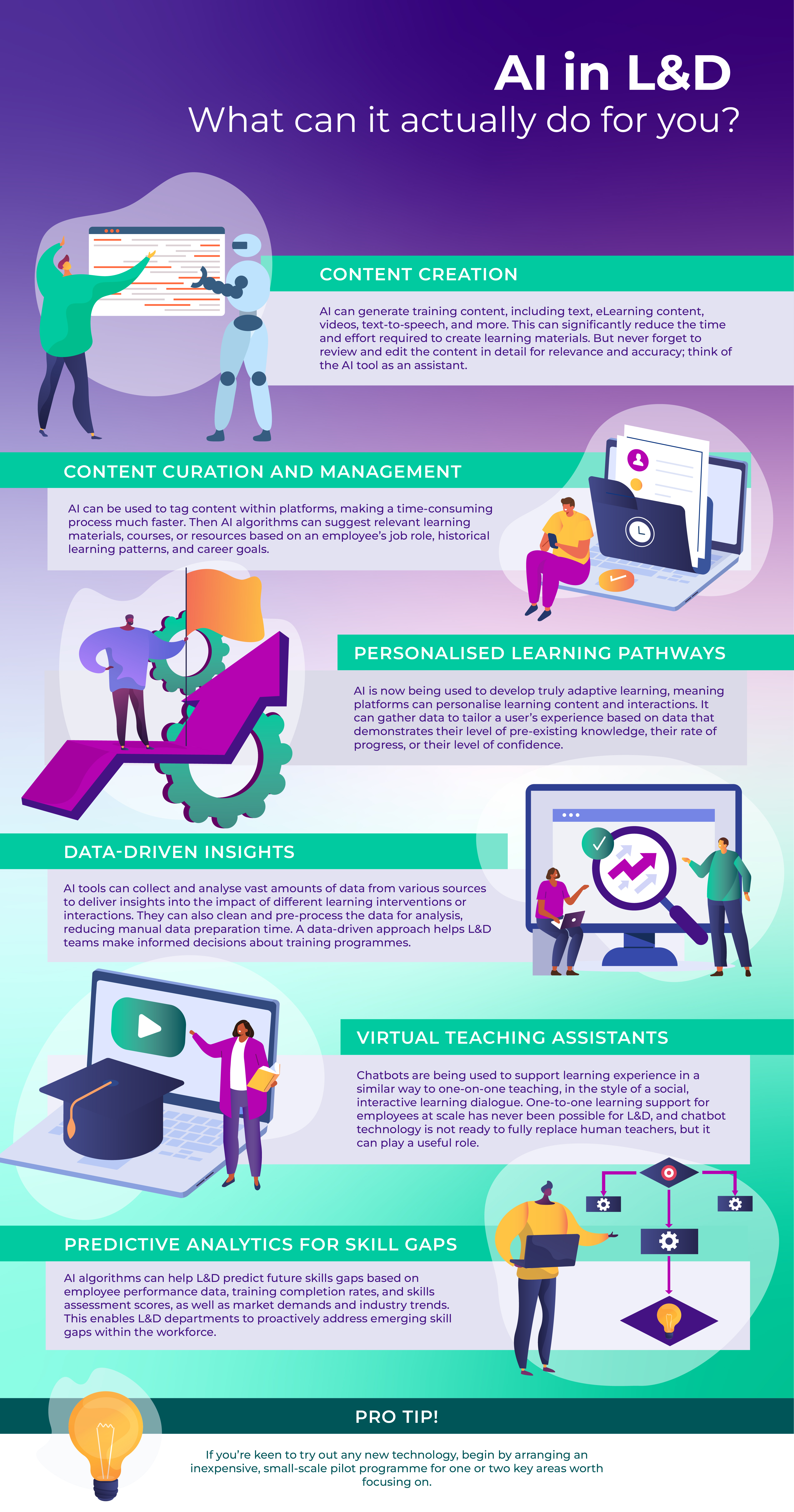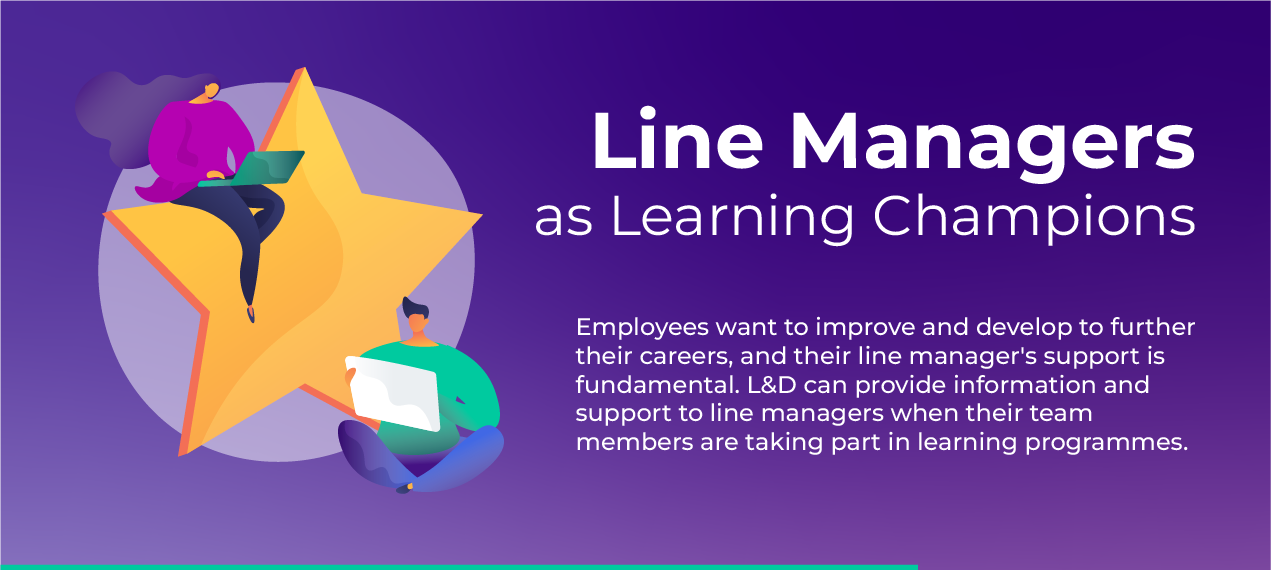In this article, we’ll look specifically at the psychological principles of Reactance and Uncertainty and how they can take good leaders to inspirational levels, across all areas of business leadership, from sales to operations. Grasping these psychological principles will not only help our leaders become more influential and successful, but can also help us design learning experiences that are relevant to today’s leadership.
The Basics of Behavioural Science in Leadership
To understand why Behavioural Science is having such an impact on leadership, let’s probe into its fundamental principles. At its core, it examines how an individual’s environment and experiences influence what they think, feel, and do. By leveraging this knowledge, leaders can resonate with their teams and customers, fostering engagement and driving performance.
On a recent project, I designed a learning experience to empower sales teams to enhance their leadership skills using Reactance and Uncertainty; participants applied these psychological principles in selling conversations to build their powers of persuasion and create lasting relationships with customers. So, let’s delve into each of them.
Reactance: Nudging without Pushing
With the help of our in-house Behavioural Science team, I explored the psychological phenomenon* of Reactance. Reactance explains why when given advice, even from a place of good intention, we can feel that our freedom or control is being threatened, which can lead us to resist the communication, often doing the opposite to protect our autonomy.
*It may sound a bit grand to call it a phenomenon; I mean it both in terms of it being an observable behaviour as well as something that is impressive and extraordinary! I am also perhaps a little relieved to learn that there is an actual word for it – a clever lot, these Behavioural Scientists!
Understanding Reactance can be a game changer for leaders, especially in the context of sales, where resistance and objections are commonplace.
As a quick example, I received a sales call from Hello Fresh a few weeks ago. I LOVE Hello Fresh and am happy for them to contact me in what I perceive as more gentle emails and text messages. They phoned me one evening, and I found myself telling them that I was no longer interested. Reflecting on this, I can see that their approach – calling me when I didn’t think I’d given them permission – felt like a threat to my autonomy! And this in turn triggered my Reactance behaviour. They lost, but I lost, too: since then, I’ve lost many more evenings wondering what to have for dinner…
The great thing about Behavioural Science is that it also offers solutions. By employing subtle strategies that can nudge rather than push, leaders can learn to overcome objections more effectively. Rather than pushing an idea too strongly, leaders can present options or invite opinions, to offer greater freedom of choice.
This approach can reduce Reactance and help build rapport and trust with team members and customers. By recognising and respecting an individual’s need for autonomy, leaders can navigate conversations more smoothly and ultimately drive better results. This also applies to L&D leaders, so it may be something you can try, too.
Uncertainty: An Opportunity for Growth
The second psychological principle is Uncertainty, and again, our in-house Behavioural Science team were helpful in explaining some of the associated complexities.
We are surrounded by Uncertainty, so a willingness to embrace it is a critical management tool. Successful leaders have learned to lean into Uncertainty rather than fear it. However, an intrinsic part of being human is that our brains are built to value certainty. Wanting to feel sure about something makes perfect sense, as sticking to the predictable can avoid feeling uncomfortable, or even overwhelmed.
On a personal level, I am a working parent who places a high value on certainty. Pre-2020, I needed to be certain that I could get the kids to school each morning so I could start my working day. The school closures that came with the 2020 lockdown caused chaos for parents and caregivers globally. As a family, we soon found our rhythm. Still, we had to be inventive and redefine our values, to find new approaches and routines – I am sure I was not the only parent on a Zoom call having just taped a DO NOT ENTER sign to the bedroom door and still wearing pyjama bottoms…
Uncertainty can trigger innovation and creativity, which is essential for growth. Leaders who view Uncertainty as an opportunity for growth can inspire their teams to think outside the box when it comes to changes in circumstance.
Back to the example of sales teams – by encouraging calculated risk-taking where they have weighed up the pros against the cons, leaders can empower their sales teams to explore new approaches, discover new markets, and achieve impressive results. Richard Branson is a successful leader who has embraced Uncertainty to reap the rewards: “Innovation happens when people are given the freedom to ask questions and the resources to find the answers”. As a leader, he is comfortable with the level of Uncertainty that goes with this approach.
Embedding Behavioural Science into Leadership Development Programmes
To fully embrace the power of Behavioural Science, it is essential to integrate its principles into leadership development programmes. For example, choosing personalised and learner-centred approaches coupled with careful activity design can help reduce Reactance and encourage leaders to be more willing to embrace Uncertainty.
Ways to Avoid Reactance and Overcome Uncertainty in Learning Experiences
- Make it self-directed
Provide leaders with the freedom to choose what they want to learn and how they learn it, to help them stay engaged and motivated. Even with self-directed approaches, leaders still need support and resources. Offer access to mentors, coaches, and other learning materials. - Provide opportunities for reflection
Add the think, feel, and do, and avoid telling them what to do. How can leaders be prompted to think about what they have just learnt and to notice how they feel about it? Perhaps ask them what they would do in that situation, or how they would do it differently next time. Consider how they may collect their reflections – would it be in a workbook or an online journal, for example? - Make the learning active
One way to make learning active is to review each part of the learning and decide if it is an active or passive experience. If it is passive, consider adding an activity that prompts reflection or provides an element of choice to avoid Reactance. If it is active, is there an opportunity for the leader to be creative (or autonomous) in their answer? - Create opportunities for dealing with Uncertainty
Role play games, for example, can closely mirror the Uncertainty of real life, where you have incomplete information and need to think on your feet and practise processing uncomfortable situations. Make sure you build in elements of group or partner work in this part of your design: collaboration and dialogue with others is a vital way to learn and share how to process uncomfortable information. - Break it down and set small goals
When faced with a large and Uncertain learning goal, it can be helpful to break it down into smaller, more manageable goals, and celebrate successes along the way. This will make the task less daunting and keep the leader motivated and on track. - Create a supportive environment
When people feel comfortable taking risks and making mistakes, they will feel more confident in their ability to handle Uncertainty. Empower leaders with the freedom to take risks with their decisions to create an environment where Uncertainty can be embraced.
Recap
By understanding the basic principles of Behavioural Science, we can create engaging learning experiences that drive performance and build meaningful connections.
Talk to us today if you would like to find out how we can help you with your L&D offering!







Is this article interesting?